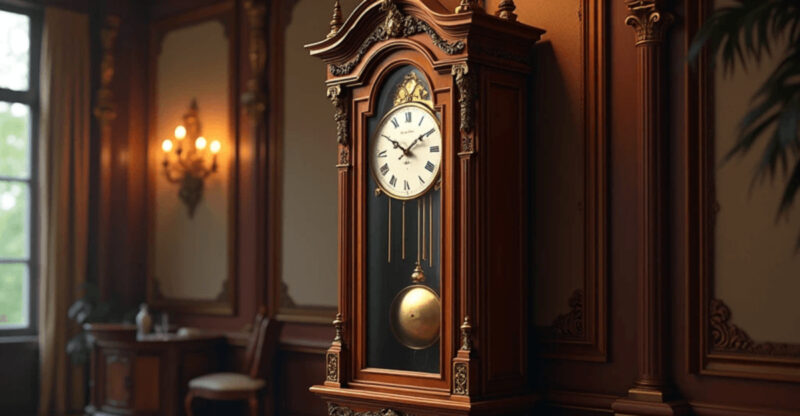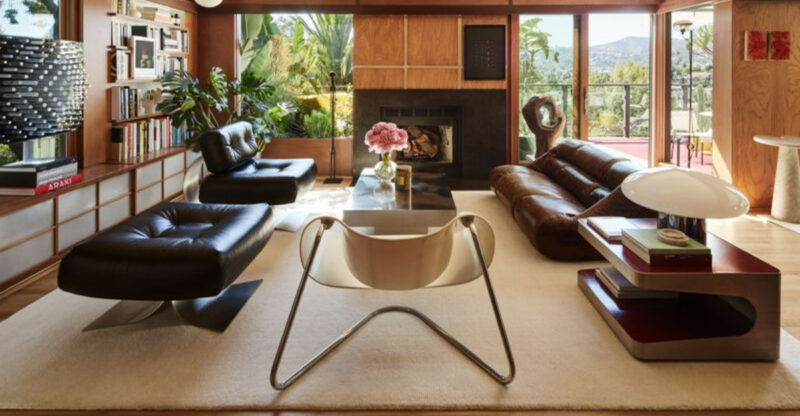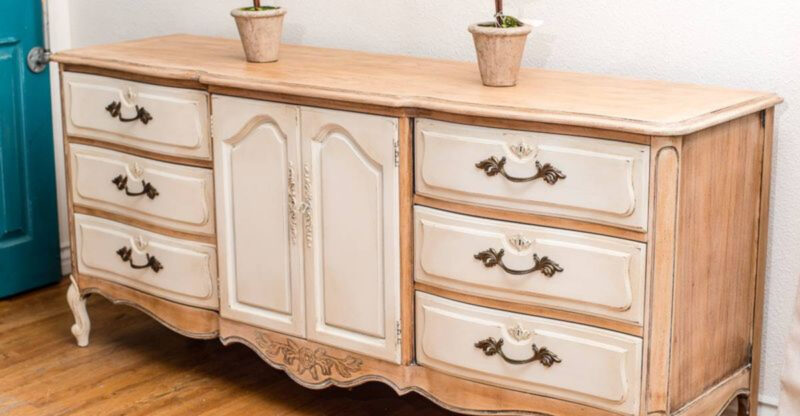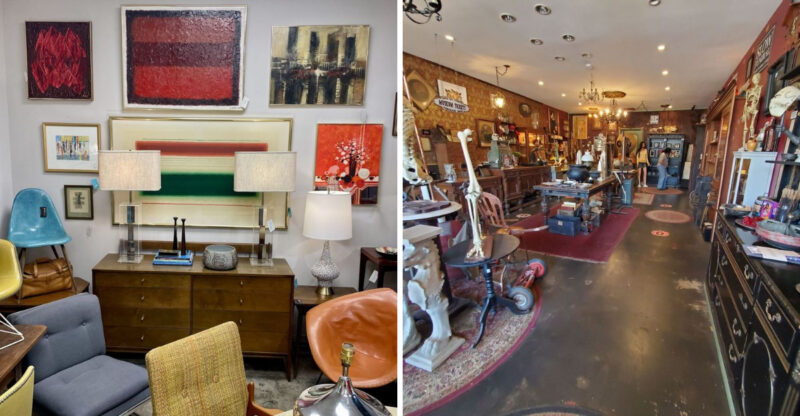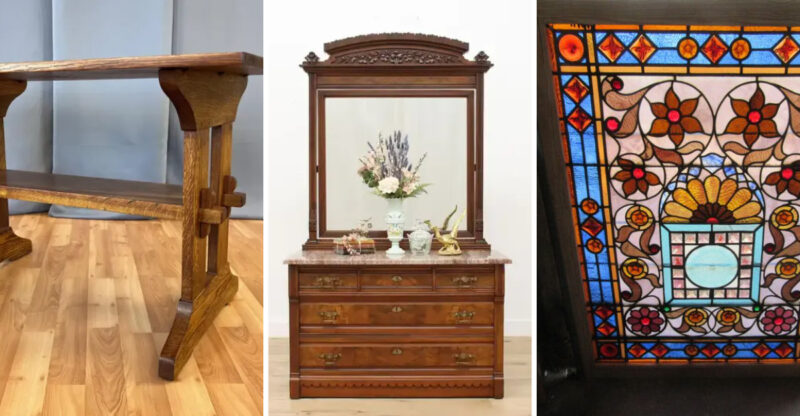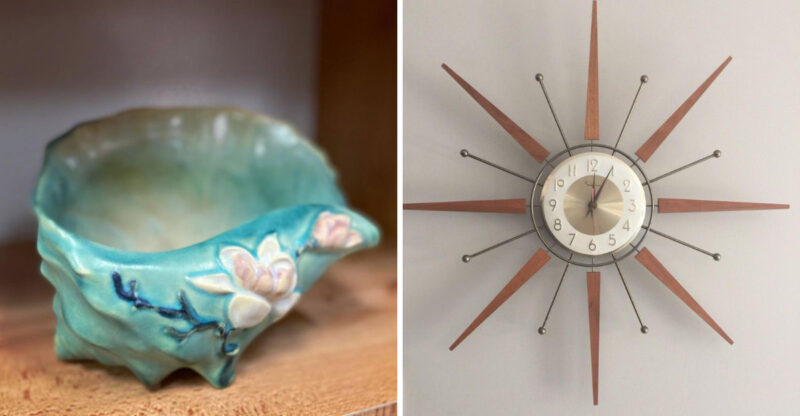16 Vintage 1970s Kitchen Designs That Will Make You Feel Nostalgic
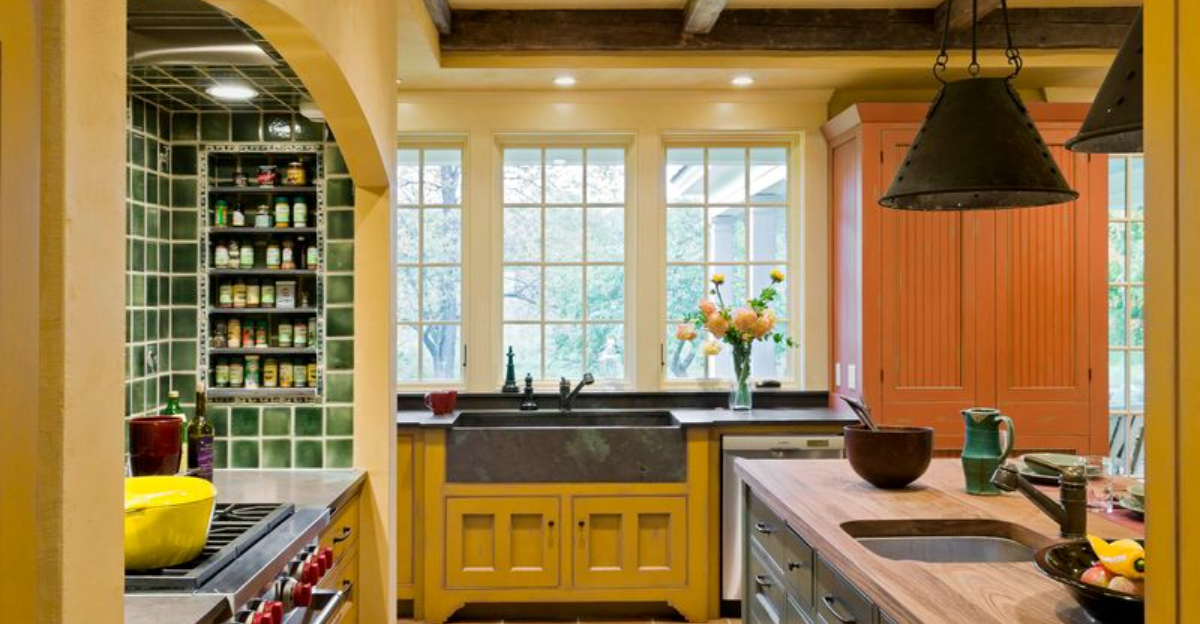
Remember those kitchens from the seventies with their bold colors and unique features? That decade was a time when kitchens weren’t just functional spaces but statements of personal style.
From avocado green appliances to macramé plant hangers, these design elements defined an era of home decor that was anything but subtle.
1. Avocado Green Appliances

Before avocado toast was trendy, this distinctive shade of green dominated kitchen appliances everywhere. Refrigerators, stoves, and dishwashers all matched in this earthy tone that brought the outdoors inside.
Avocado green perfectly captured the decade’s environmental consciousness. Even after all these years, spotting that unmistakable hue instantly transports people back to family dinners around the formica table.
2. Burnt Orange Accents
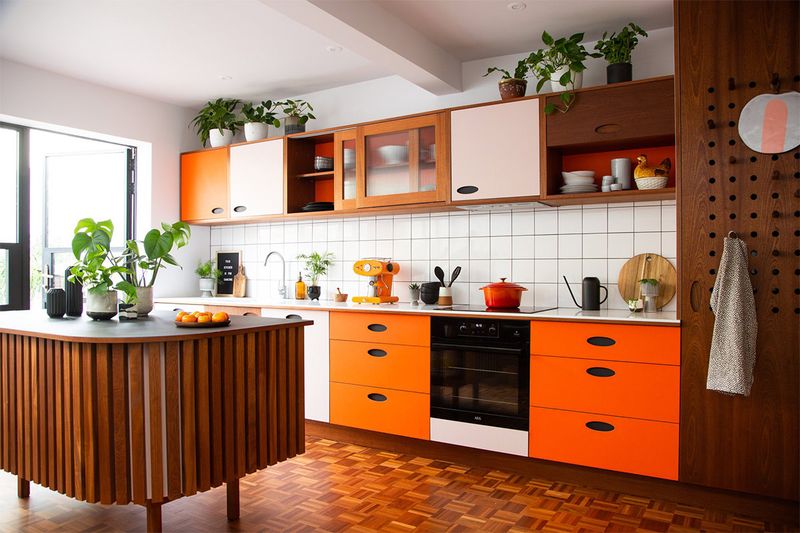
Fiery and bold, these pops of color breathed life into kitchens across America. From canisters to curtains, burnt orange accents created visual warmth that perfectly complemented the decade’s earthy aesthetic.
The rusty hue appeared on everything from teakettles to mixing bowls. Many homeowners paired these striking orange elements with dark wood cabinets, creating that unmistakable 70s vibe that feels both dated and timeless.
3. Brown And Tan Tile Combinations
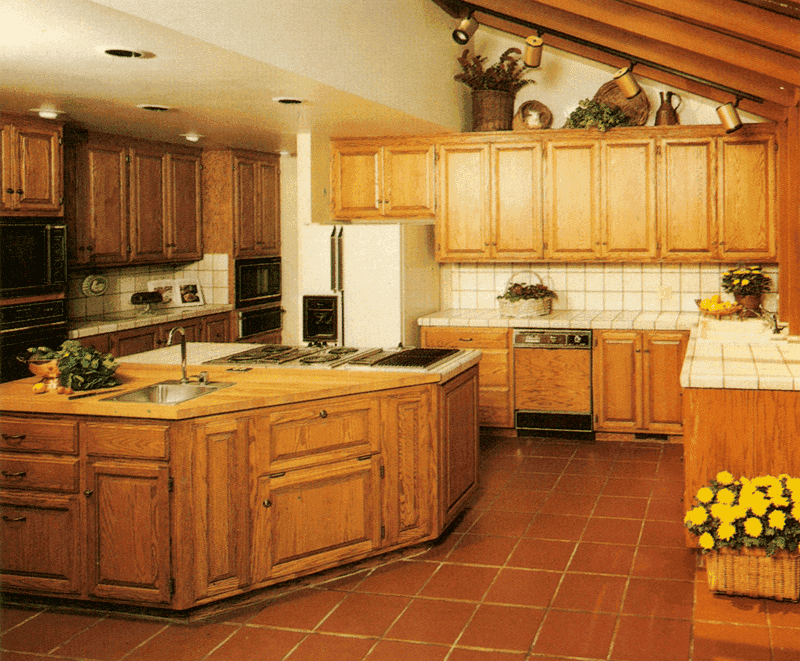
Earthy color schemes ruled supreme in the groovy decade, with chocolate browns and sandy tans covering floors, walls, and backsplashes. These natural tones created a grounded feeling that reflected the back-to-nature movement.
The tiles often featured subtle patterns or textures for added dimension. Brown and tan combinations worked perfectly with the decade’s popular wood tones, creating kitchens that felt like extensions of the outdoors.
4. Laminate Countertops With Bold Patterns
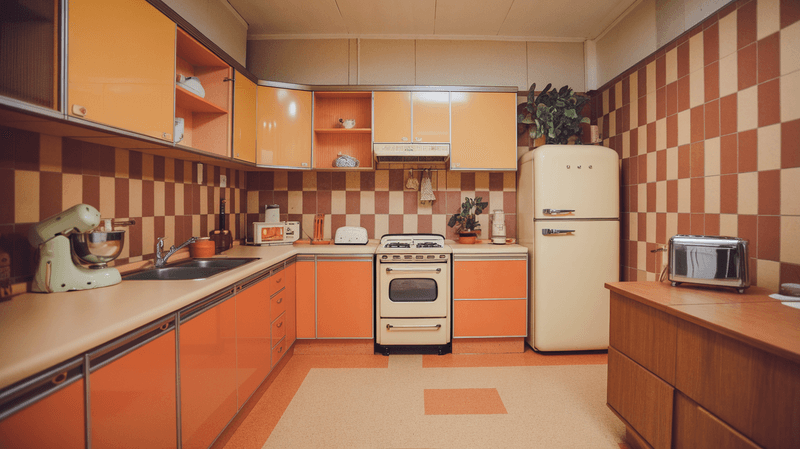
Forget subtle marble veining – the 70s embraced countertops with personality! Swirling patterns, speckled designs, and geometric shapes transformed ordinary surfaces into conversation pieces.
Formica became the brand everyone knew, offering affordable and practical options. These laminate wonders came in gold-flecked patterns, faux woodgrain, or abstract designs that somehow managed to coordinate with those avocado appliances and orange accessories.
5. Wood Paneling And Cabinet Fronts
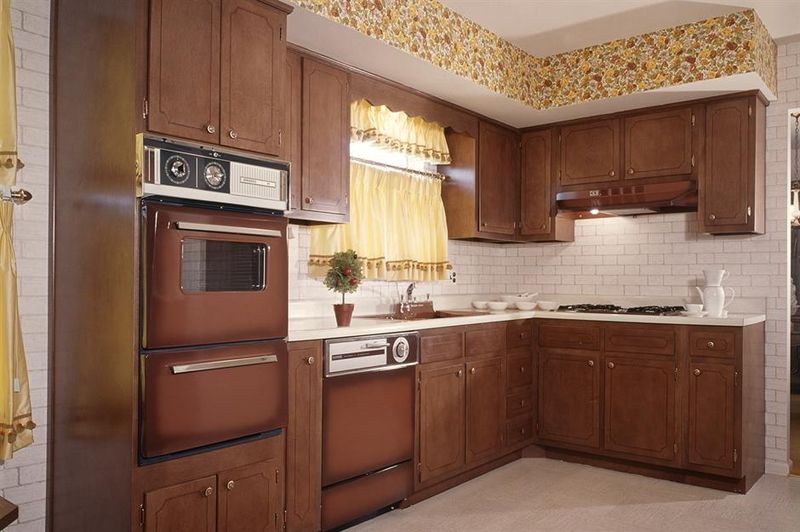
Warm, rich wood tones enveloped kitchens from floor to ceiling during this design era. Dark oak and walnut finishes dominated, creating cozy spaces that felt like natural extensions of the popular den and family room designs.
Cabinet fronts often featured decorative routing or raised panels. The overall effect was substantial and grounding – these weren’t lightweight or minimalist kitchens, but spaces that announced their presence with authority and warmth.
6. Patterned Linoleum Floors
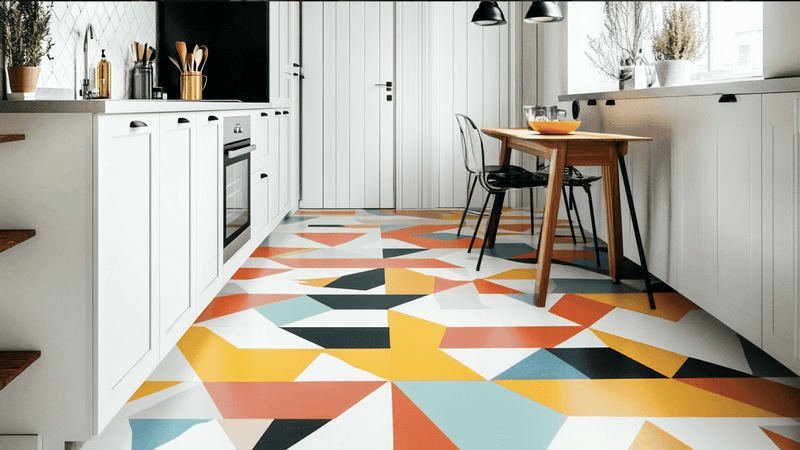
Underfoot, the 70s kitchen boasted easy-care linoleum in patterns that ranged from subtle to statement-making. Faux brick, hexagonal tiles, and floral motifs transformed floors into design features rather than mere walking surfaces.
The practical material stood up to kitchen spills and cleaning. Particularly popular were the sheet vinyl options that mimicked Spanish tile or natural stone – bringing exotic flair to suburban homes across America.
7. Ceramic Tile Backsplashes
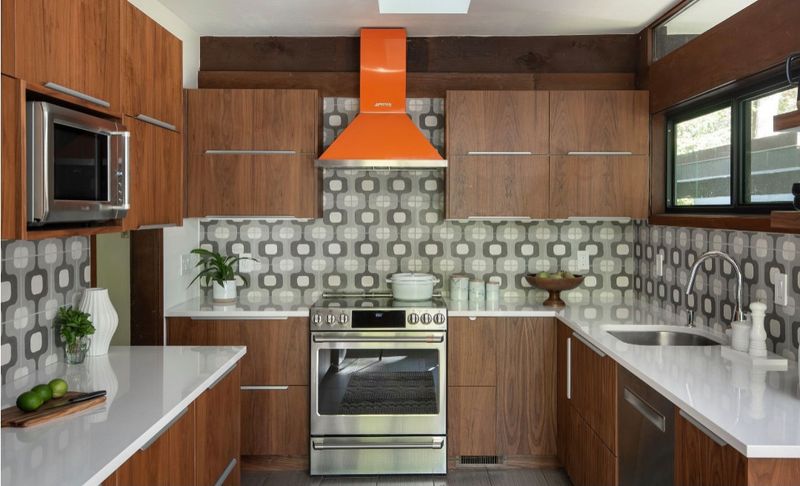
Hand-painted scenes brought personality to kitchen walls, with everything from roosters to windmills adorning these functional surfaces. Small square tiles in earth tones created distinctive backdrops for meal preparation.
Some homeowners opted for themed collections that told a story. The slightly uneven handmade quality of many of these installations added character that mass-produced options today often lack, creating kitchens with genuine personality and charm.
8. Built-In Breakfast Nooks
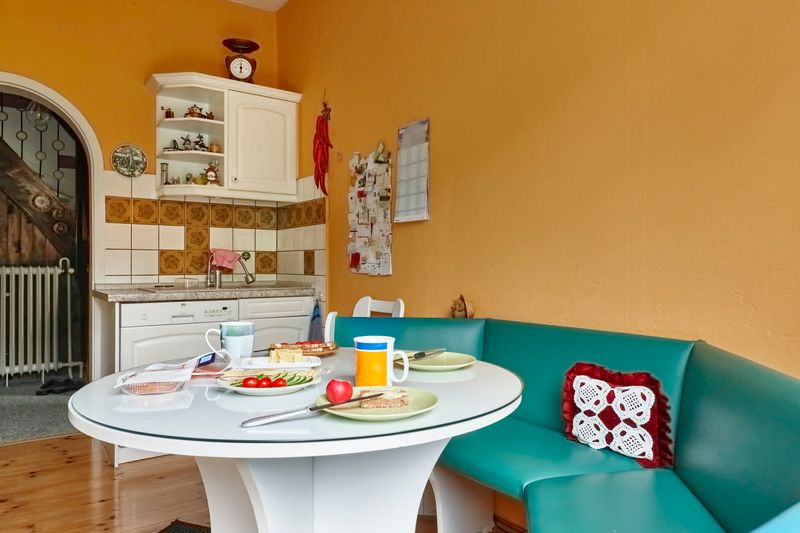
Cozy corner seating transformed morning routines into comfortable rituals for families across America. Upholstered in vinyl or naugahyde, these practical eating areas maximized space while creating dedicated spots for casual meals.
The built-in benches often included hidden storage underneath. Typically adorned with a hanging pendant lamp above, these nooks became the heart of daily family life – where homework was completed, morning coffee was savored, and weekend pancakes were enjoyed.
9. Suspended Upper Cabinets

Floating in mid-air between kitchen and dining areas, these innovative storage solutions created visual division without blocking light or conversation. Often featuring glass fronts or open shelving, they displayed prized dishware while maintaining accessibility.
The suspended design became a hallmark of modern 70s kitchens. Homeowners loved how these floating cabinets created architectural interest while providing practical storage – truly the perfect marriage of form and function that defined the decade’s best design elements.
10. Pass-Through Kitchen Windows

Serving made simple was the goal of these clever architectural features that connected indoor kitchens to outdoor entertaining spaces. The pass-through window eliminated the need to carry dishes through the house to reach the patio.
Complete with a counter shelf and often adorned with decorative trim, these windows were practical innovations. They represented the growing casual entertainment style of the 70s, where backyard barbecues and pool parties became central to social life.
11. Harvest Gold Cabinets
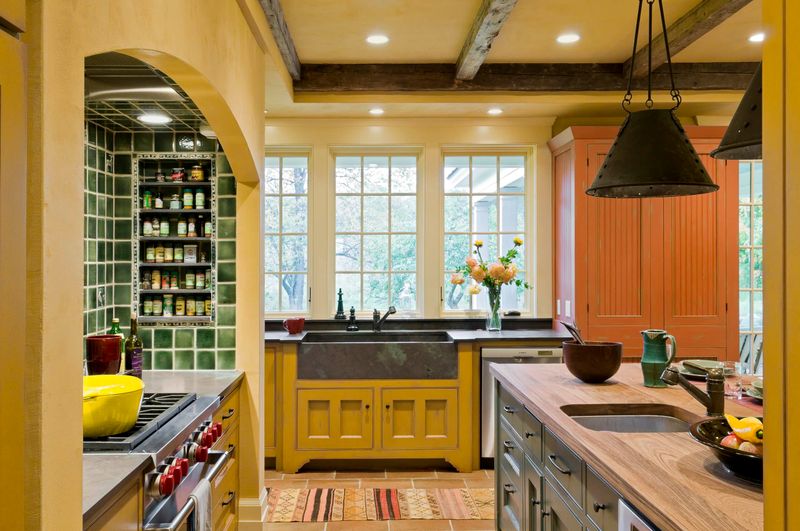
Nothing screams 70s quite like that warm, mustard-yellow tone that dominated kitchens across America. Harvest Gold cabinets paired perfectly with wood trim and created that cozy, autumn-forever feeling.
Families would gather around these golden beauties, making memories while Mom prepared dinner in her stylish kitchen. The color somehow made every meal feel like Thanksgiving!
12. Macramé Plant Hangers
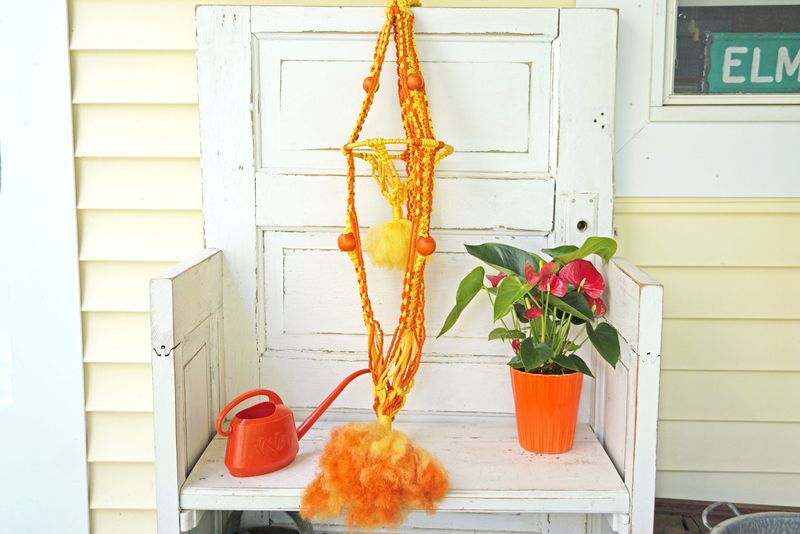
Handcrafted from jute or cotton cord, these intricate creations dangled pothos and spider plants from kitchen ceilings everywhere. The textured rope designs added organic warmth to even the most modern spaces.
Plant parenthood exploded during this decade, with hanging greenery becoming essential decor. The macramé revival perfectly captured the 70s bohemian spirit, bringing handmade charm and living elements into utilitarian spaces.
13. Vintage Light Fixtures And Pendant Lamps
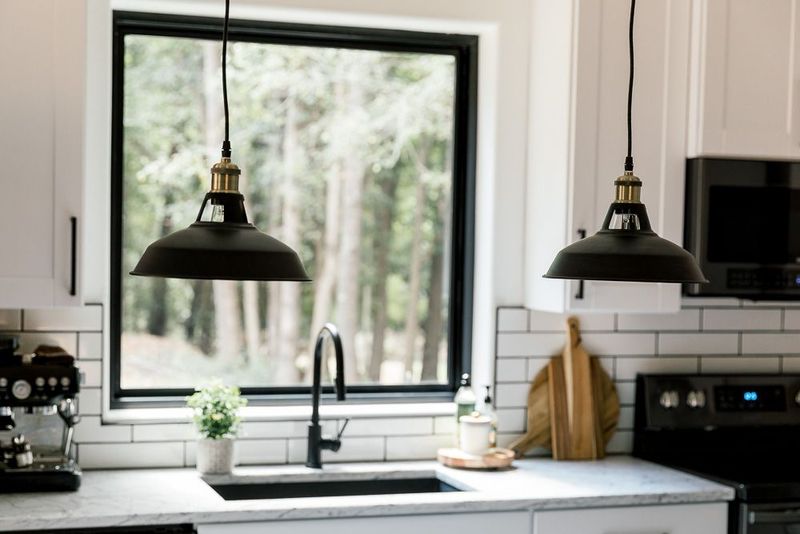
Illumination made a statement with swag lamps, globe lights, and dramatic chandeliers that cast a warm glow over family gatherings. Amber glass, wrought iron, and polished brass created focal points above kitchen islands and dining areas.
The lighting often incorporated natural materials like rattan or wood. These statement pieces reflected the era’s move away from purely functional lighting toward fixtures that doubled as decorative elements – truly lighting as art.
14. Retro Wall Clocks And Timers

Keeping time was stylish business with oversized wall clocks featuring bold numerals and colorful faces that coordinated with kitchen color schemes. Sunburst designs and starburst patterns turned these functional items into decorative statements.
Mechanical egg timers shaped like fruits or animals added whimsy to countertops. These charming timepieces weren’t just practical cooking tools but expressions of personality in an era before digital everything took over our homes.
15. Bold Wallpaper Prints
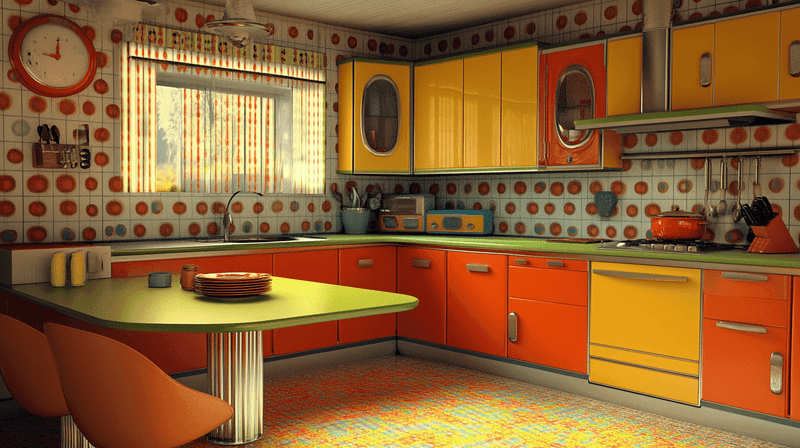
Walls came alive with oversized florals, geometric patterns, and scenic murals that turned kitchens into immersive environments. Vibrant colors and high-contrast designs created dramatic backdrops for everyday cooking.
Fruit motifs and mushroom patterns were particularly popular choices. The wallpaper wasn’t limited to just one accent wall – 70s homeowners embraced pattern from floor to ceiling, creating kitchens with undeniable personality that announced their presence the moment you entered.
16. Plastic And Melamine Dishware Displays

Colorful collections of unbreakable dishes stood ready for family meals, often displayed in glass-front cabinets or on open shelving. Melmac and other melamine brands offered affordable, durable alternatives to fragile china.
These practical pieces came in fantastic color combinations like sunshine yellow and tangerine orange. The stackable, practical nature of these dishes made them perfect for busy families, while their cheerful colors added to the overall vibrant aesthetic of the quintessential 70s kitchen.

